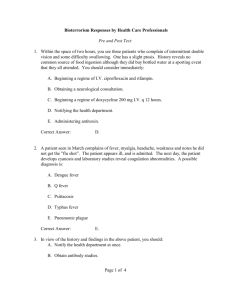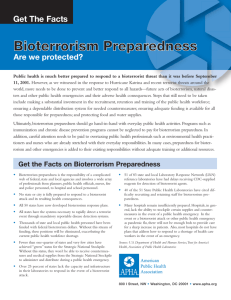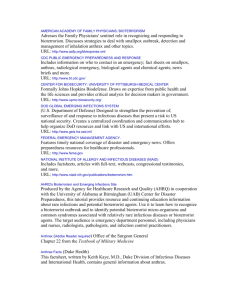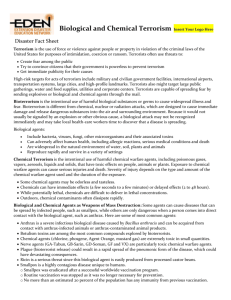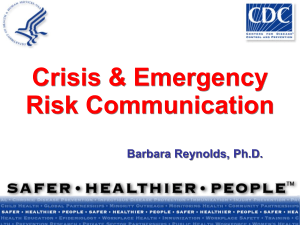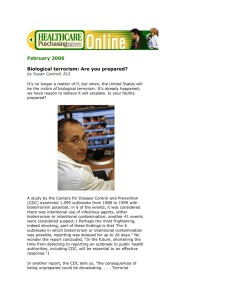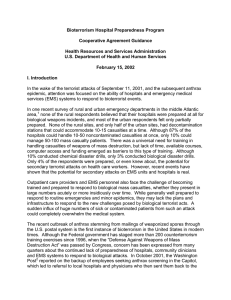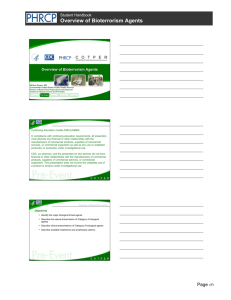Module User Memo-Read First - Association of Occupational and
advertisement
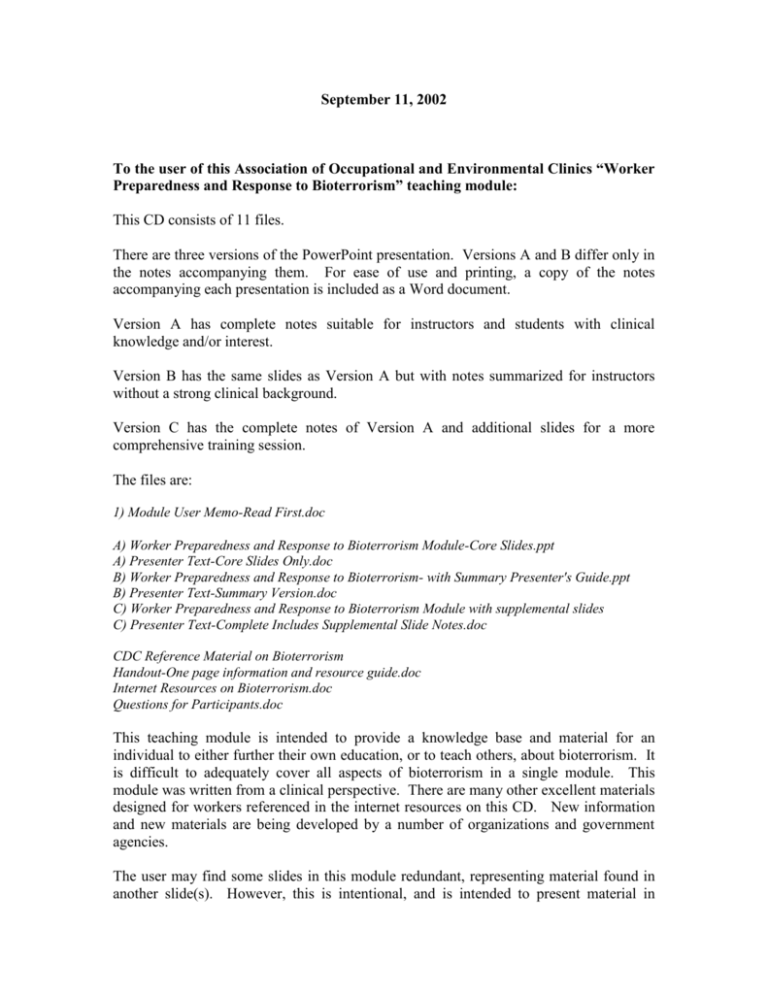
September 11, 2002 To the user of this Association of Occupational and Environmental Clinics “Worker Preparedness and Response to Bioterrorism” teaching module: This CD consists of 11 files. There are three versions of the PowerPoint presentation. Versions A and B differ only in the notes accompanying them. For ease of use and printing, a copy of the notes accompanying each presentation is included as a Word document. Version A has complete notes suitable for instructors and students with clinical knowledge and/or interest. Version B has the same slides as Version A but with notes summarized for instructors without a strong clinical background. Version C has the complete notes of Version A and additional slides for a more comprehensive training session. The files are: 1) Module User Memo-Read First.doc A) Worker Preparedness and Response to Bioterrorism Module-Core Slides.ppt A) Presenter Text-Core Slides Only.doc B) Worker Preparedness and Response to Bioterrorism- with Summary Presenter's Guide.ppt B) Presenter Text-Summary Version.doc C) Worker Preparedness and Response to Bioterrorism Module with supplemental slides C) Presenter Text-Complete Includes Supplemental Slide Notes.doc CDC Reference Material on Bioterrorism Handout-One page information and resource guide.doc Internet Resources on Bioterrorism.doc Questions for Participants.doc This teaching module is intended to provide a knowledge base and material for an individual to either further their own education, or to teach others, about bioterrorism. It is difficult to adequately cover all aspects of bioterrorism in a single module. This module was written from a clinical perspective. There are many other excellent materials designed for workers referenced in the internet resources on this CD. New information and new materials are being developed by a number of organizations and government agencies. The user may find some slides in this module redundant, representing material found in another slide(s). However, this is intentional, and is intended to present material in multiple ways in order to improve the comprehension and retention of the material by the user (student/instructor) or listener (student). It is also intended to provide the person (user/instructor), who will use this material as a basis for instruction, with multiple options (i.e. slides) to present similar material. This module is intended to serve as a modest “library” of information and teaching material that a user may draw upon to educate his/her co-workers. Specific jobs considered in the preparation of this module include mail handlers, prehospital first responders (EMTs, paramedics, firefighters, law enforcement), hospital-based medical workers, lab workers, clean up workers, and any worker that may be involved in a bioterrorist attack. The depth and technical content in this module is wide ranging in order to provide a useful level of material to as a wide range of workers as possible. This module is relatively large, and not likely to be easily presented in a single lecture. Therefore, it has been designed to be presented in smaller sections. The module has been divided into a number of sections, each covering a particular biological agent or concept. Additionally, each slide has been marked in its accompanying notes as a “Core Slide” or a “Supplemental Slide”. The Core slides are to be considered essential for a complete presentation of that section. The Supplemental slides are likely to enhance the presentation of their section, but may be omitted without a significant loss of content. As previously noted, Versions A and B are only the Core slides. However, the presenter may always tailor his/her presentation by using Version C and omitting any slide from their presentation. This is simply accomplished by the user going to the “Slide Sorter” view in PowerPoint, and selecting the “Hide Slide” option for the slides not to be included in a presentation of a module section. The user/instructor is strongly encouraged to change the order of slide presentation, the number of slides used for a given topic, or any other modification to the presentation in order for it to be more effective for a particular audience. There is also a slide annex with additional slides/material that the presenter may use Again, by using the PowerPoint functions, any slide(s) from the annex may be selected and included in a given presentation. This module has a significant amount of secondary references included in the notes section. Any user is strongly encouraged to review the additional material included here, as well as obtain the additional references, or visit the websites provided, to learn more about a given topic. Again, there is a great deal of information regarding bioterrorism available to the interested reader. Every effort has been made to appropriately reference all recommendations, graphic material, and photographs used in this module. The author would appreciate any feedback regarding any oversight(s) in this regard. All material presented here has been published either in print or electronic format. A year has passed since the terrorist attacks of 2001. As a result of the attacks of September 11, 2001, and the anthrax letter attacks of the Fall of 2001, a great many people have been killed or injured while “on the job,” either as unsuspecting victims or as professional first responders. Please remember that in terrorism, there are no front lines. Everyone must assume part of the responsibility of preventing, preparing for, recognizing, and responding to a bioterrorist attack. The author feels the information here is extremely valuable in workers’ response to bioterrorism. I encourage the user to utilize this module fully to help safeguard his/her workplace, and coworkers, in all ways possible. Thank you. Sincerely, Edward W. Cetaruk, M.D. Toxicology Associates, LLC Assistant Clinical Professor of Medicine Division of Clinical Pharmacology and Toxicology University of Colorado Health Sciences Center Denver, Colorado Edward.Cetaruk@UCHSC.edu
